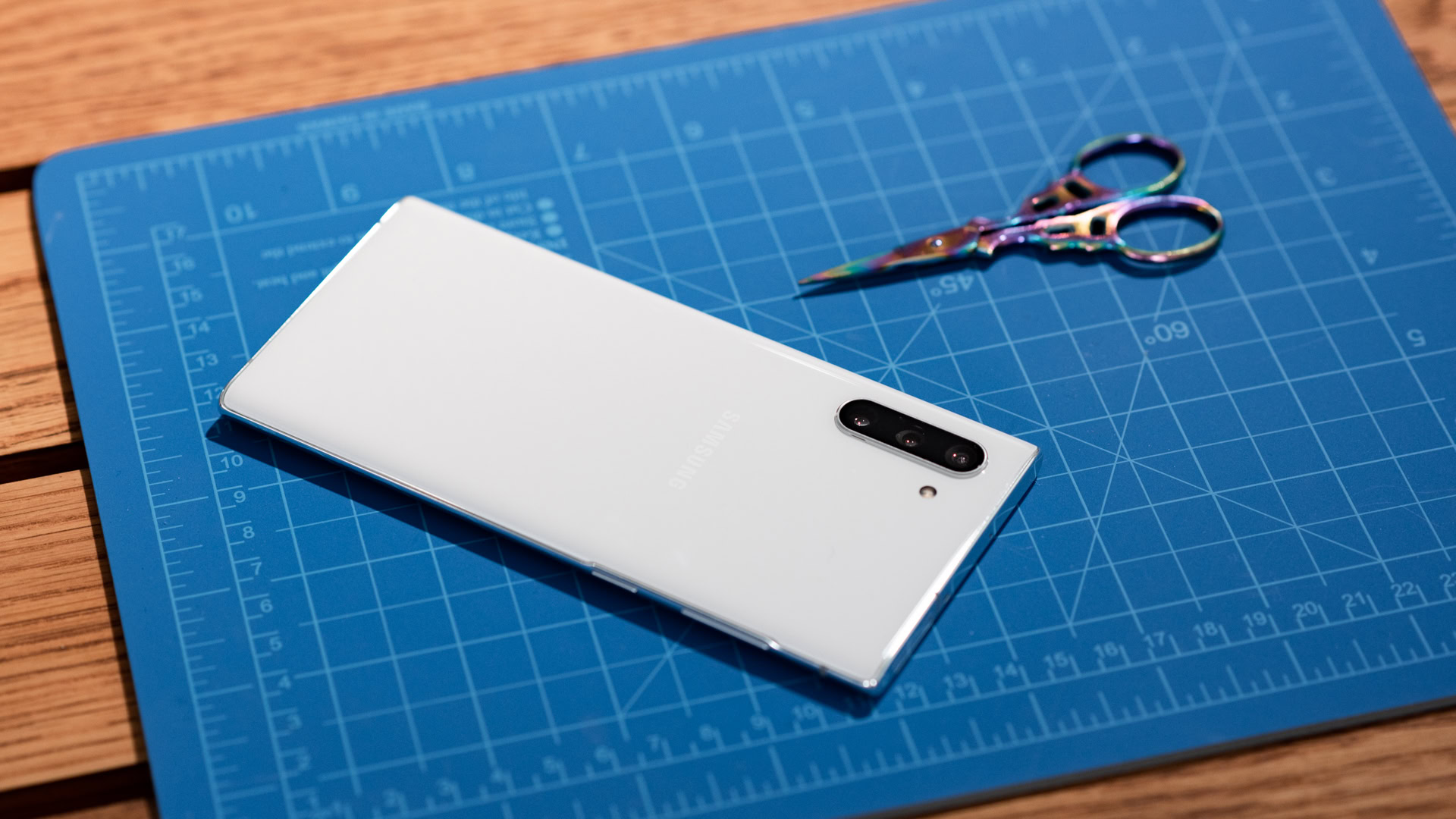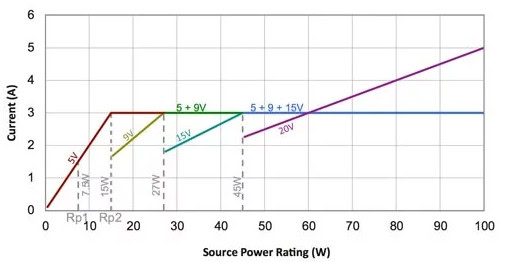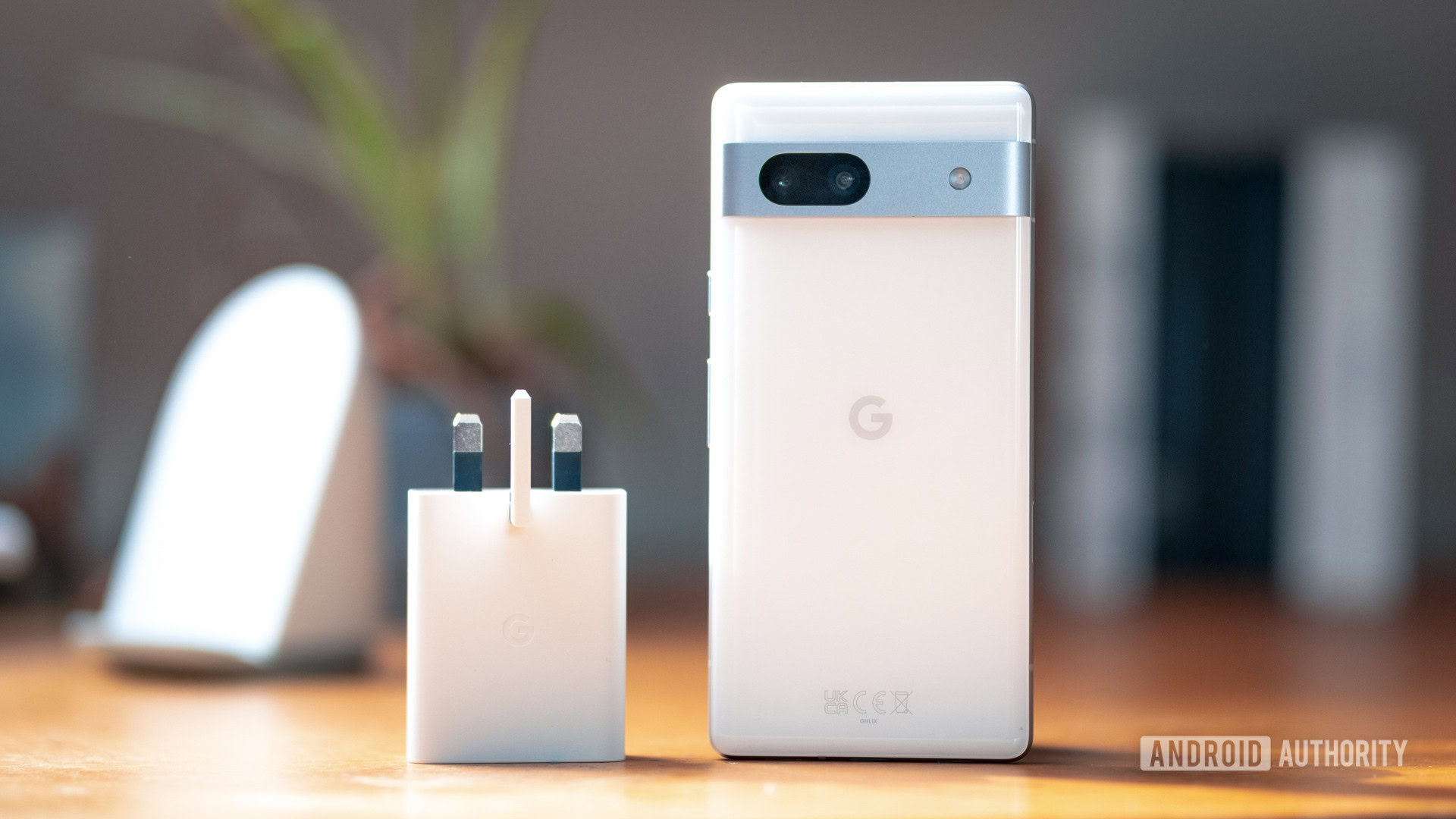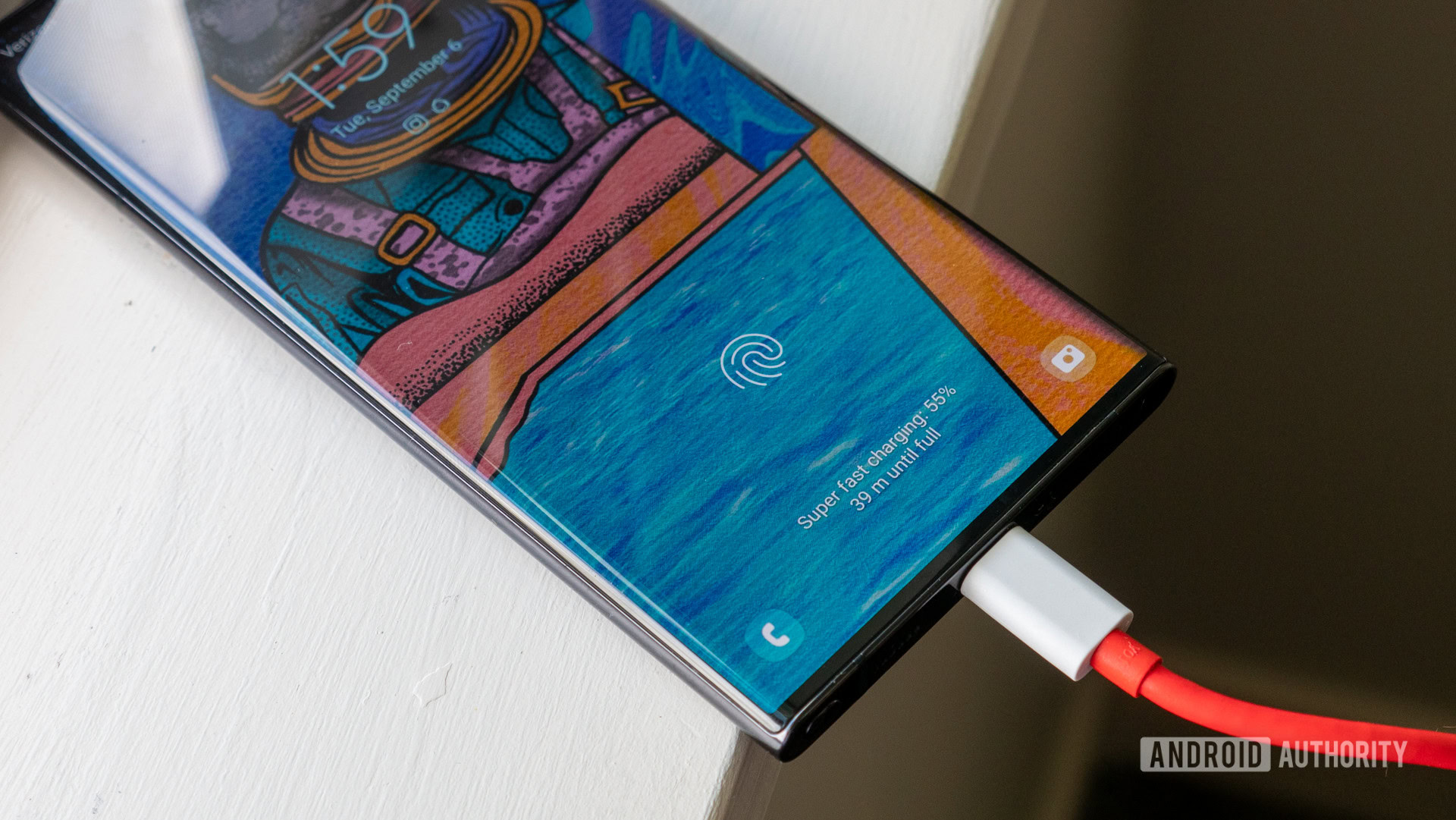Affiliate links on Android Authority may earn us a commission. Learn more.
Samsung Galaxy Note 10 Plus fast charging explained
Published onAugust 20, 2019

The Galaxy Note 10 Plus is Samsung’s fastest charging smartphone to date, provided that you’re willing to splash out on its $50 45W Super Fast charger (you get a 25W charger in the retail box). This is a notable improvement compared to previous Note generations, which only supported up to 15W charging. The boost in power sees Samsung switch to USB Power Delivery for fast charging, rather than its previous Qualcomm Quick Charge-based solution.
With the phone now arriving in customers’ hands, new owners have been testing out different chargers and cables to investigate these new Galaxy Note 10 fast charging capabilities. The situation is shaping up to be rather complicated, so here’s everything you need to know.
Editor’s note on the standard Galaxy Note 10: It does not support Samsung’s Superfast 45W charging option. This is strictly reserved for the Galaxy Note 10 Plus. Thus, all the discussion below refers strictly to the Note 10 Plus.
45W USB Power Delivery PPS
The key to achieving the maximum 45W of charging power comes from USB Power Delivery’s Programmable Power Supply (PPS) specification. PPS first appeared in the USB PD 3.0 specification, enabling devices to request small step-wise changes in voltage and current from their charger. This closely mimics ideal battery charging voltage requirements resulting in cooler charging.
According to testing conducted by Chinese owners (via Android Police), PPS also allows the Galaxy Note 10 Plus to operate outside of the traditional USB Power Delivery specification settings.
Samsung’s USB Power Delivery implementation requires 10V, but boosts the current to 4.5A, producing 45W of power. USB PD typically uses a 15V/3A combination for 45W devices, but Samsung’s adapter is special. The small print on Samsung’s U.K. website also lists a 5A cable as a requirement to charge the Galaxy Note 10 Plus at 45W. By comparison, the 25W charger in the box utilizes 11V/2.25A charging for 24.75W.
The Note 10 Plus uses USB Power Delivery's Programmable Power Supply extension to hit 45W with 10V/4.5A.

It’s not immediately obvious why Samsung chose to go outside of the typical USB Power Delivery specification. Most likely, internal testing found that Samsung can achieve faster charging speeds while sticking to decent battery thermals by increasing the charging current to 4.5A. Power Delivery doesn’t usually allow for more than 3A.
Furthermore, other Android manufacturers like HUAWEI and OPPO opt for higher currents in their proprietary fast-charging standards too. This is most beneficial during the “constant current” phase of charging when the battery is below 50% capacity and utilizes the most current. Coincidently, this is also the stage that has the biggest effect on fast charging times.


So what fast charger should you buy?
By opting for USB Power Delivery 3.0 and PPS, picking any old third-party USB Power Delivery charger will not achieve maximum Galaxy Note 10 Plus fast charging speeds. Instead, you’ll need to find a charger that specifically supports USB Power Delivery 3.0 Programmable Power Supply mode and can handle up to 4.5A of current.
Third-party chargers with the necessary protocols are hard to come by at the moment. Many of the options on Amazon don’t support USB Power Delivery 3.0 PPS and 4.5A of current. In the short term, you’ll have to stump up the $50 for Samsung’s 45W adapter and use the cable that comes with it.
As mentioned above, Galaxy Note 10 Plus fast charging at the full 45W also requires a capable cable. 5A rated USB-C cables should do the trick on paper, but user testing has found that this often results in a charging current that falls below the maximum. Cable detection is notoriously problematic with high-current charging standards.
Your best bet is to grab a high-end 100W-rated USB 3.1 Gen2 cable like this one. These typically power laptops and other power-hungry gadgets over USB-C. Alternatively, buy Samsung’s official gear to ensure compatibility.
At face value, 45W fast charging is great news for Samsung users. The company is finally back at the top of the fast charging field and supports a common, rather than in-house charging solution to boot. However, the Note 10 Plus leverages a new aspect of USB Power Delivery, which means minimal affordable third-party charging support at the moment. The Galaxy Note 10 Plus can hit 45W charging, but few consumers will probably be able to make use of it.